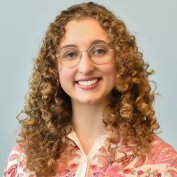Research in the Wang group is focused on the development of new synthetic methods for natural product synthesis. Of particular interest are the discovery of new synthetic strategies via visible light photocatalysis and cooperative catalysis, and their applications in the synthesis of small molecules, peptides, and proteins.
- Chemical catalysis
Photoacid catalysis: The goal of this program is to innovate in both the design and application of photoactive molecules, applying them to solve problems of biological and medicinal importance. By designing and synthesizing a new class of photo Brønsted acid and photo Lewis acid catalysts, we aim to discover new property and catalytic reactivity, and apply them to address synthetic challenges toward biological active molecules.
Organosulfur resistant catalysis (Collaboration with Prof. Michael Yeung): Application of newly developed Pt catalyst from Yeung's group to the catalytic hydrogenation of sulfur containing organic compounds.
Synthesis of natural products, peptides, carbohydrates
We are interested in synthesizing biological active natural products, pharmaceutical related small molecules, peptides, and carbohydrates.Our group has been working on small molecules targeting Myotonic dystrophy (DM)
(Collaboration with Prof. Andy Berglund and Prof. Kaalak Reddy). Myotonic dystrophy (DM) is a group of inherited muscle disorders characterized by muscle weakness and myotonia, with notably prolonged muscle contraction. There are two primary types of DM: type 1 (DM1) and type 2 (DM2), each caused by repeat expansions within specific genes. DM1 arises from a CTG repeat expansion within the DMPK (dystrophia myotonica protein kinase) gene, while DM2 is caused by a CCTG repeat expansion within the CNBP (CCHC-type zinc finger nucleic acid-binding protein) gene. Small molecules have emerged as promising therapeutic candidates toward DM, therefore, the goal of this program is to search a small molecule lead compound through synthesis of a library of modified polycyclic compounds (MPCs).Small molecule synthesis for PET imaging (Collaboration with Prof. Jason Cai at Yale University)
We design and synthesize a library of protein ligands derived from the lead compounds disclosed from literature patents for PET imaging students.
- Photoswitchable control of different glutamate transporter sub-types
(Collaboration with Prof. Annalisa Scimemi and Prof. Alex Shekhtman)
In this project, we design and synthesize photoswitchable tethered ligands (PTLs) to study the functional properties of biological important proteins and precisely control the function of the proteins, particularly glutamate transporter sub-types in this project.
Photoswitchable RNA/DNA chemistry
We design and synthesize photoswitchable RNA to study the functional properties of oligonucleotide and precisely control the regulation of base pairing, DNA replication, RNA reverse transcription, as well as CRISPR-Cas gene editing systems. (Collaboration with Prof. Jia Sheng and Prof. Alex Shekhtman)In addition, we are also interested in incorporating the photoswitchable ligands to DNA nanoswitches. (Collaboration with Dr. Ken Halvorsen and Dr. Arun Richard Chandrasekaran)
Join our Group
Postdoctoral: Qualified and highly motivated candidates are encouraged to apply. Please send application materials as a single PDF file to twang3@albany.edu
Graduate Students: We are always looking for enthusiastic and highly motivated graduate students to join our group. Please check the UAlbany website for admissions details.
Undergraduate Students: Students interested in organic chemistry are encouraged to contact Ting directly.
Classes
Classes taught by Dr. Wang include Organic Chemistry I (ACHM 220) and Pre-organic Chemistry (ACHM 143). The mission of the pre-organic chemistry class is to help undergraduate students make a smooth transition from General Chemistry to Organic Chemistry.
There are probably two major reasons sophomore undergraduates who perform well in General Chemistry may struggle with Organic Chemistry. One is that the knowledge gap between General Chemistry and Organic Chemistry is fairly large. Most of freshman college students have been introduced to general chemistry in high school. Therefore, the transition between high school level chemistry to college level general chemistry is manageable.
However, when students enter to their second year, organic chemistry is a totally new subject for most of them. Together with abstract orbital theory, the 3-D molecular structures and much deeper mechanistic studies, students can be easily lost in the first half of Organic Chemistry.
The other issue is that the way to learn General Chemistry and Organic Chemistry is very different. To learn “How To Learn” is another serious project for undergraduate students. Pre-Organic Chemistry introduces organic chemistry to freshman and teaches them the way to learn Organic Chemistry in their following semester.
Related Links
- UAlbany Chemistry
- Organic Chemistry Division
- For a complete list of Undergraduate Chemistry courses, see the Organic Chemistry listings in the Undergraduate Bulletin.
1400 Washington Avenue
Albany, NY 12222
United States












































